You must be logged in to rate content!
8 minute(s) of a 548 minute read
11-1-2011
Here we are again. It has just turned 6.15 p.m. and I have just finished washing up. This morning I finished screwing in the two body strengthening brackets I had made yesterday. This afternoon has been spent re-claiming about 75% of the original Packard flexible conduit and the two main junction boxes that mount along the right hand side chassis rail. One directly below the bulkhead the other in line with the stop-light switch at the third cross member. I will probably have to replace the smaller diameter conduit that runs forward to the headlamps and the one that carries the wires to the horn and then back to the base of the steering column. This also involved making two new lids to replace those missing from both junction boxes. Oh yes, I did stop for 15 minutes to watch the running of the Melbourne Cup, our most famous horse race, on TV.
11-2-2011
As Charlie Brown is reported as saying "Good Grief"
How many little clamps, brackets and fittings can you wire brush, sand paper, prime, sandpaper again and finally paint? Oh yes then there is the copper pipe from the petrol (gas) tank to the vacuum tank. It has lived under the car among all the grime and grott for the past 88 years. Hey, this is meant to be fun!
11-4-2011
Just as life goes on so does the work, As part of preparing the bulkhead for painting I have removed the red fibre board, electrical junction 'box'. While it is apart is seemed a good time to give it a clean before stowing it away safely. The thing that impresses me about this is the way Packard made sure that even the simplest country mechanic or village blacksmith (remember this was 1923) could cope with electrical wiring repairs.
Typical is the labelling of the various terminals. For instance, having done some reading on the subject, I know that the terminal marked 'Spl Tail' was to cater for those states that required that the tail lamp be switched on and off from the rear of the car. This connection is live once the ignition is turned on so will serve perfectly for the stop light switch. It is also worth noting that the matching terminals on the strip from the dash side of the bulkhead shows AM+ (ampmeter positive) and AM- (ampmeter negative) then the number of the terminal on the main switch e.g. SW#7 etc that that particular wire goes to. It is all these little refinements that make the Packard so rewarding to work on.
While on the subject of electrical wiring does someone, anyone have a listing of the colour combinations for 1920s Packard wiring? What was left of the original wire was so faded and decayed as to all look the same dirty grey. That is where any insulation remained.
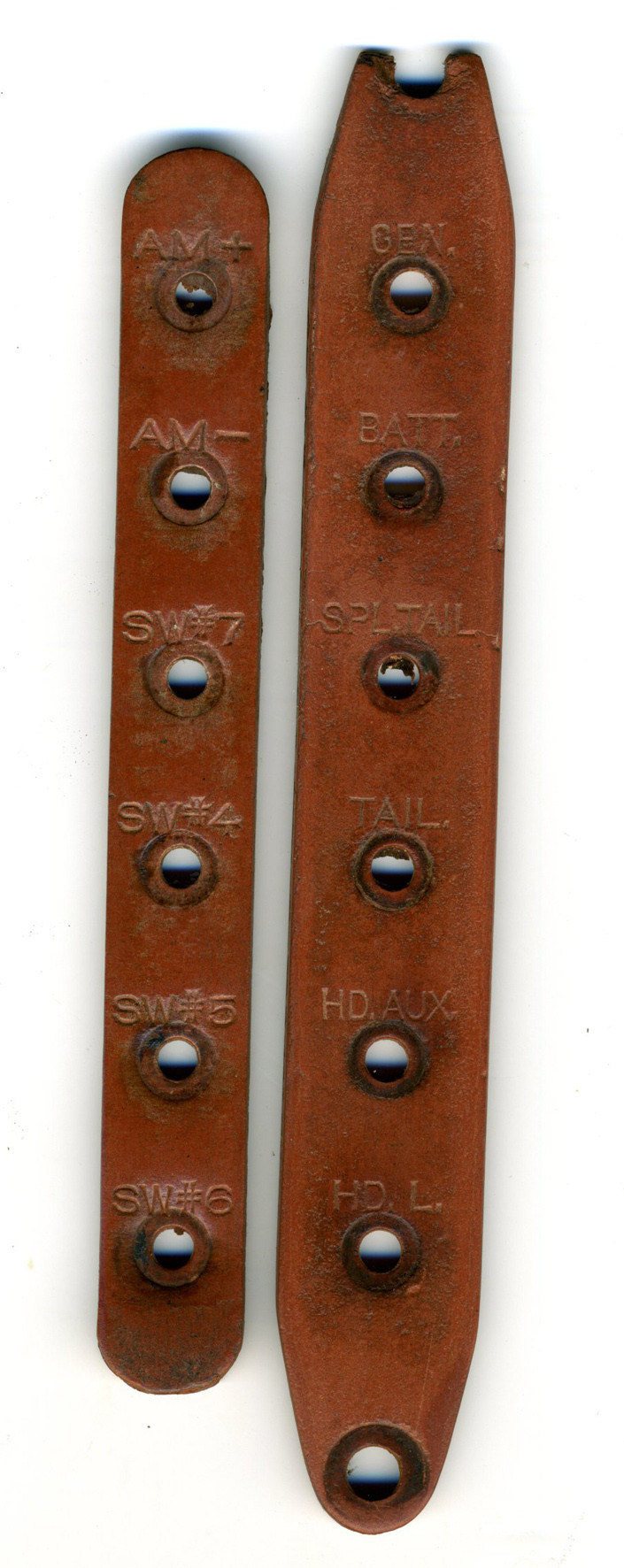
11-5-2011
Hi All
I trust that I am not boring anyone but to explain what I am talking about I have scanned a couple of pages out one of my books on the subject of Auto- electrics. I have used as an example a section of a 1952 Morris Minor wiring diagram as a typical and relatively basic English car. This shows how a system of varied colours for the outer insulating coating of the wires simplifies the tracking of a particular circuit. For example all wires going to earth are Black. I find it difficult to believe that American manufacturers did not use some similar system to identify individual electrical circuits.
It would be easy for me to use the Lucas system but then it would not be as it was, when the Packard left the factory.
I believe that as far as possible for a restoration to be "correct" these things should be 'as when new'.
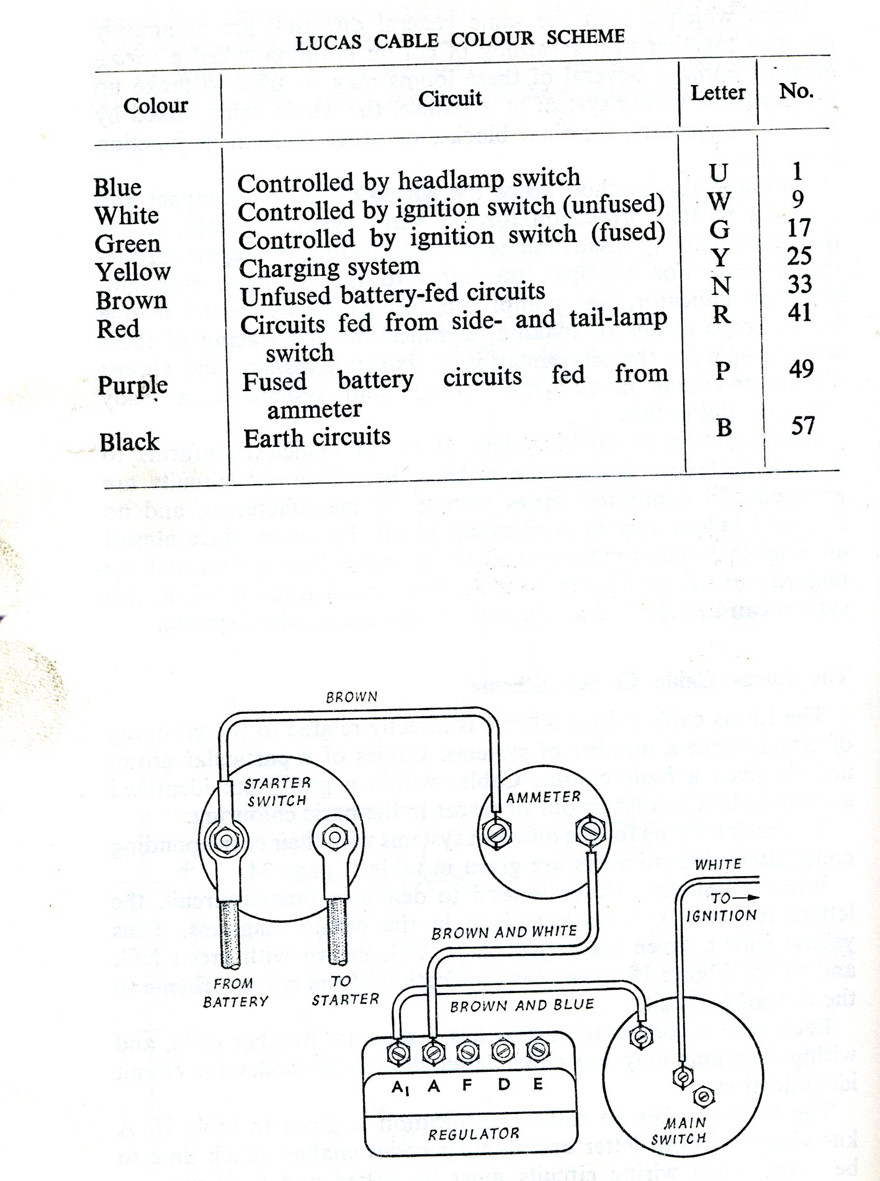
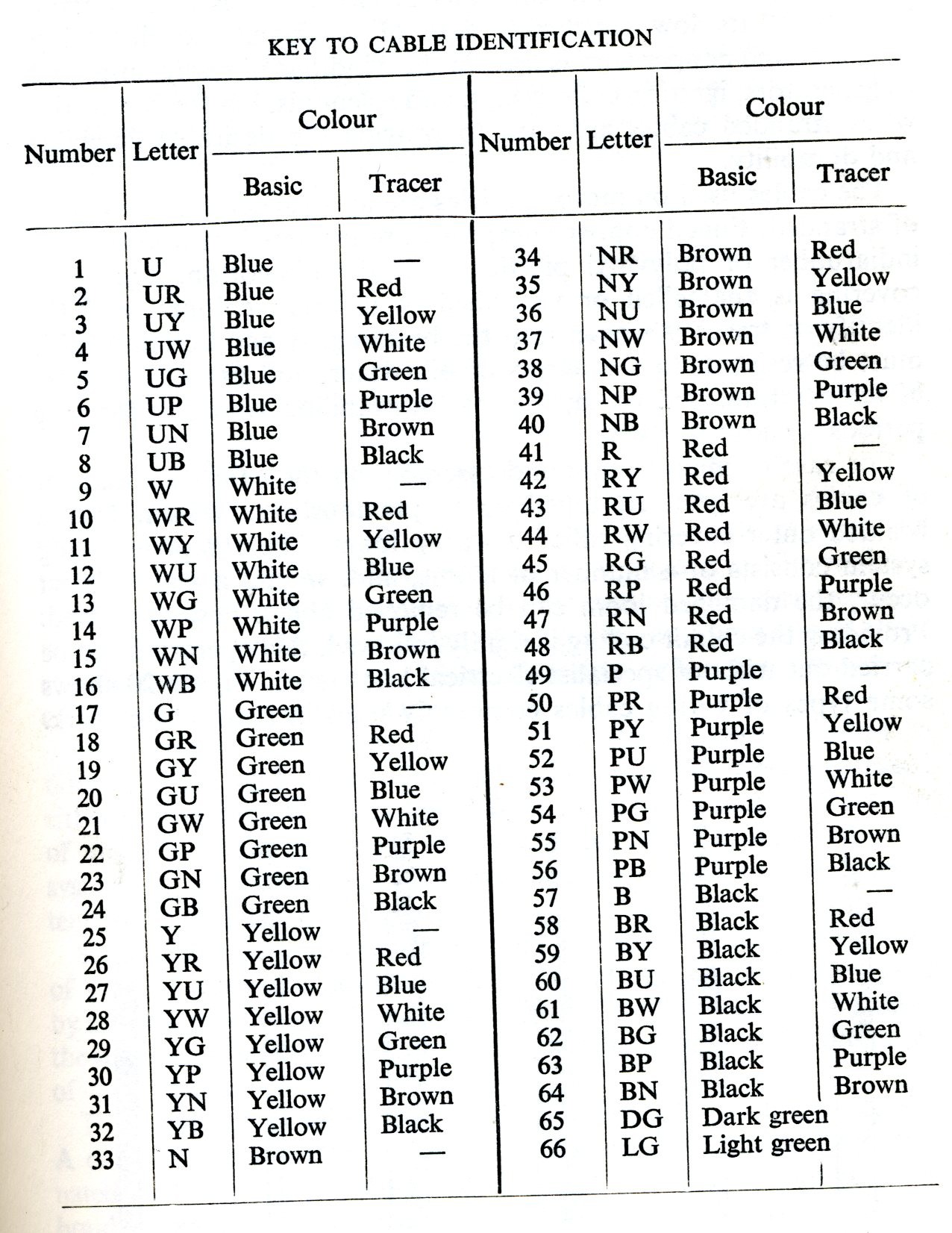
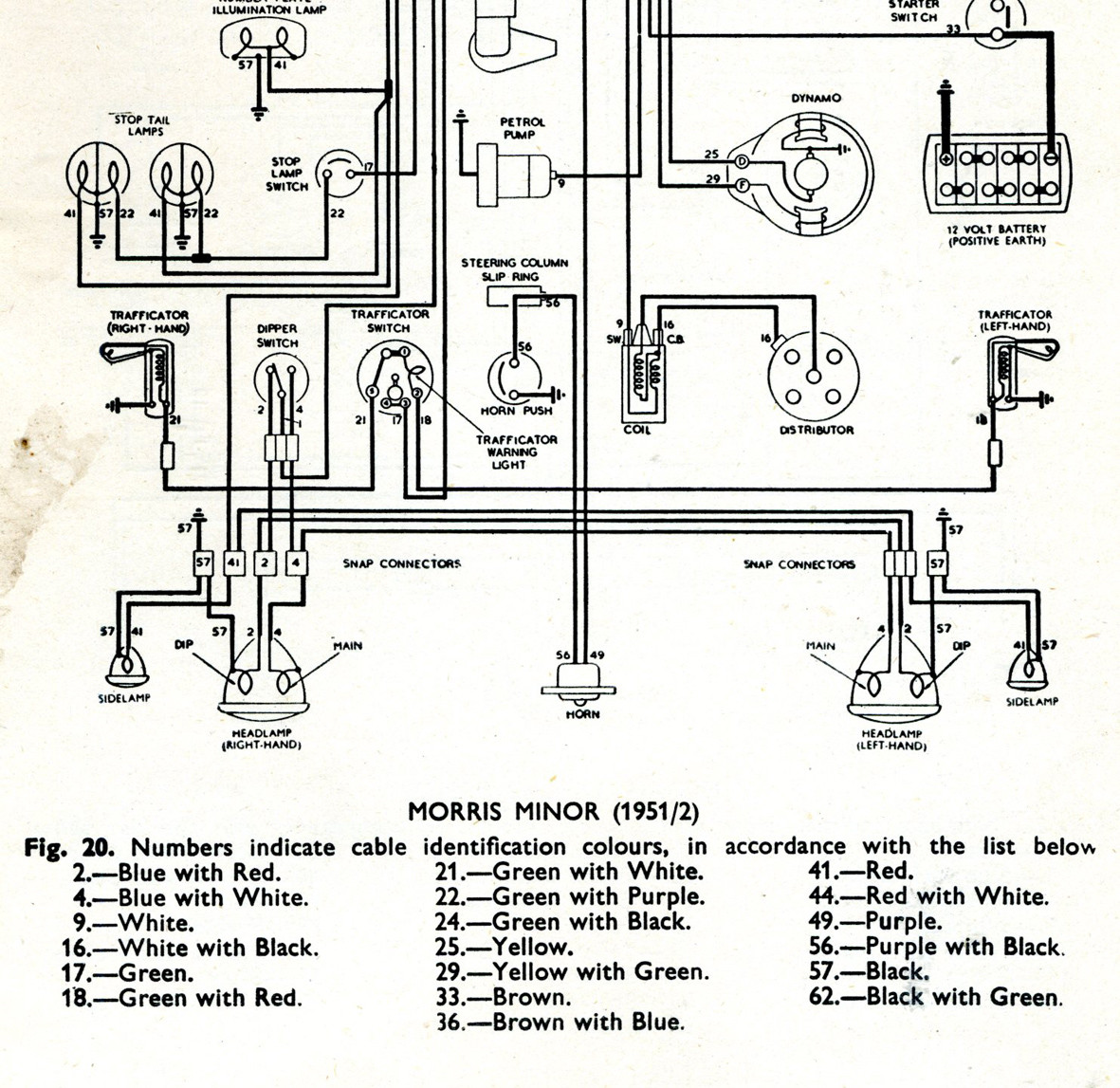
11-7-2011
Hi David
Many thanks for the Service Parts List. It is rather difficult to read in the form that you sent it but I will leave it until your life comes back to normal. Meanwhile I have just eight more Phillips head screws in the luggage compartment lid to replace with slotted head and the body is ready to go off to the painters. He is not quite ready to make a start on it but at least it will be in the queue.
It is now 6.15 pm so time to down tools and get cleaned up.
Hi All
Just a little insight into my days. By now some of you will have noticed that around 6.00 p.m. is my knock off time at the end of a days work. This day begins when the clock radio starts babbling at 5.30 a.m. It is now 7.30 and I have showered and am ready to start breakfast. My aim is to have finished my chores inside by around 9.00 to 9.30 then out into the shed. I take about an hour for lunch. No morning coffee or afternoon tea.
I just plod along slowly getting things done. One task at a time and definitely ONE project car at a time.
Some of you may be wondering about my wife, Helen, She too lives a busy life. Since retiring some years ago from her job with the Police Department, she has become the Secretary of the Ladies section of her Golf club. She plays 18 holes every Tuesday. We both play Petanque on Monday mornings, being a dedicated Francophile, Helen does three French language classes each week and Yoga on Friday afternoon. She enjoys cooking and is a keen (vegetable) gardener. She is an extremely good navigator and enjoys our competitive club motoring (Rallies & navigation trials) in the 1934 Lagonda Rapier. We are approaching our 50th Wedding Anniversary, next April. We both enjoy our five yearly extended European holidays (about 4 months) We ship the Lagonda ahead (by sea) and use it as our daily driver. Our next trip is planned for 2014.
Helen & the Lagonda Rapier at the summit of the Stelvio Pass in the Italian Tyrol in 2004. The second photograph has us on tour. The Rapier rear fenders seem to attract mud.
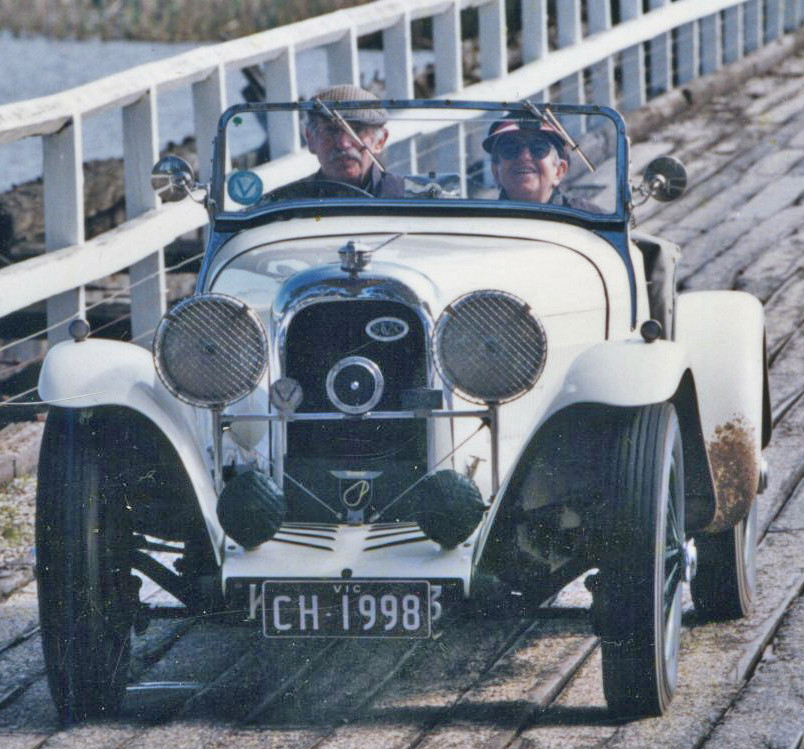
11-8-2011
It is that time again.
While it seems that not much progress has been made, looking back I have sanded the coating of light surface rust off the steel cowl and given it a coat of etch primer so that it will not go rusty again, not in the short term at least. This afternoon I have bitten the bullet and started to cut up the very expensive cabinet grade Black walnut timber for the door capping and to go along the top of the body at the sides of the rear seat etc. I wanted to have this done before the body disappears for a few weeks. Jim, my friendly tilt tray man, is due to pick it up tomorrow or the next day.
Hi all
Well following a diabolical weather forecast my tilt tray man decided that today was not a good option. Silly part is that this afternoon has seen beautiful sunshine. We had been told to expect torrential rain with up to 50mm (2 inches) in as many hours. As it has turned out it has suited me as I could finish off all the timber (Black Walnut) door capping and apply the first coat of sealer/polish to them. I know at first glance you could be excused for thinking that I have started making skis for my grandchildren but not true. Those four pieces of kindling wood represent just over $100 of my hard earned cash.
I know that I could have used any old timber and stained it a sort of walnut colour but as I keep repeating this car has to be "right". Packard used Black Walnut so that is what I am using. There are still two pieces that go on top of the door pillars but I cannot make them just yet. I have the original piece that goes across the cowl below the windscreen safely tucked away out of harm's way.
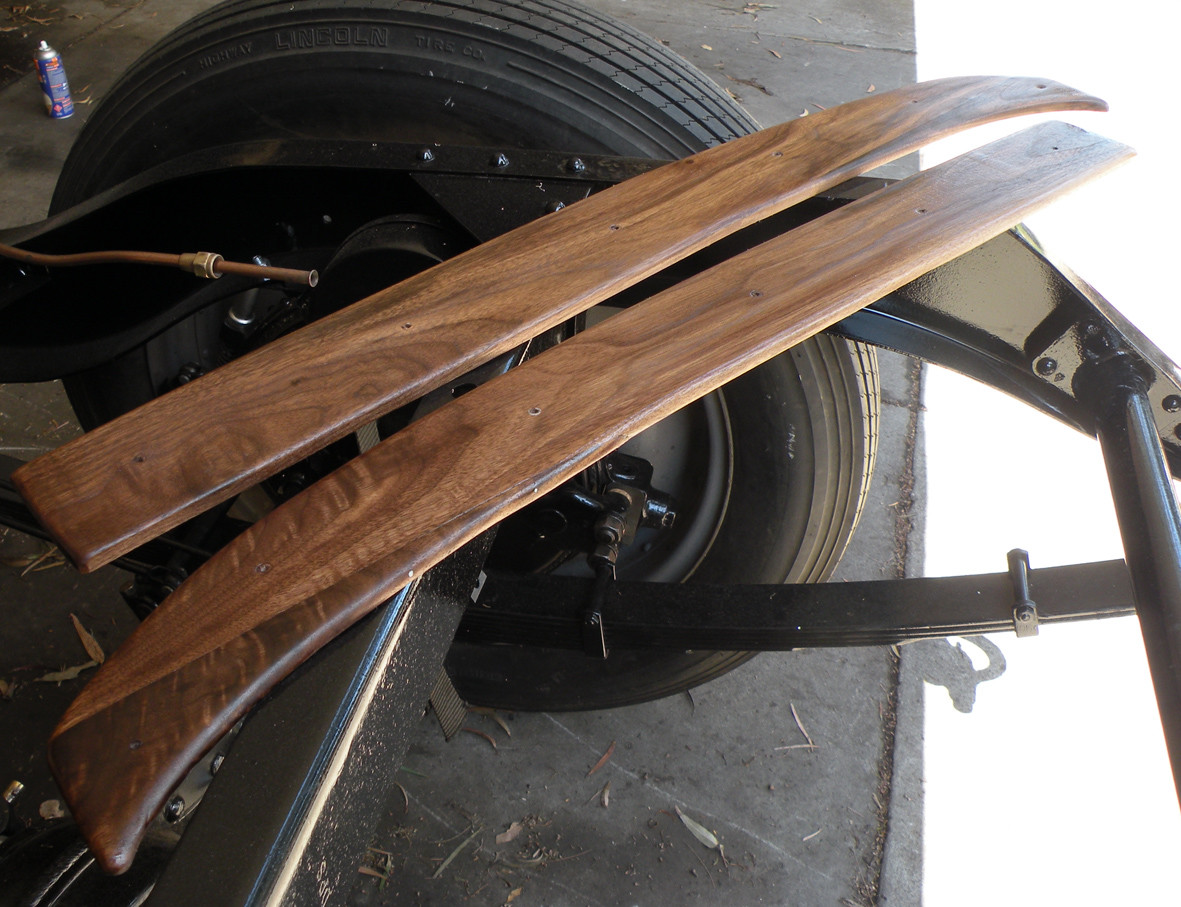
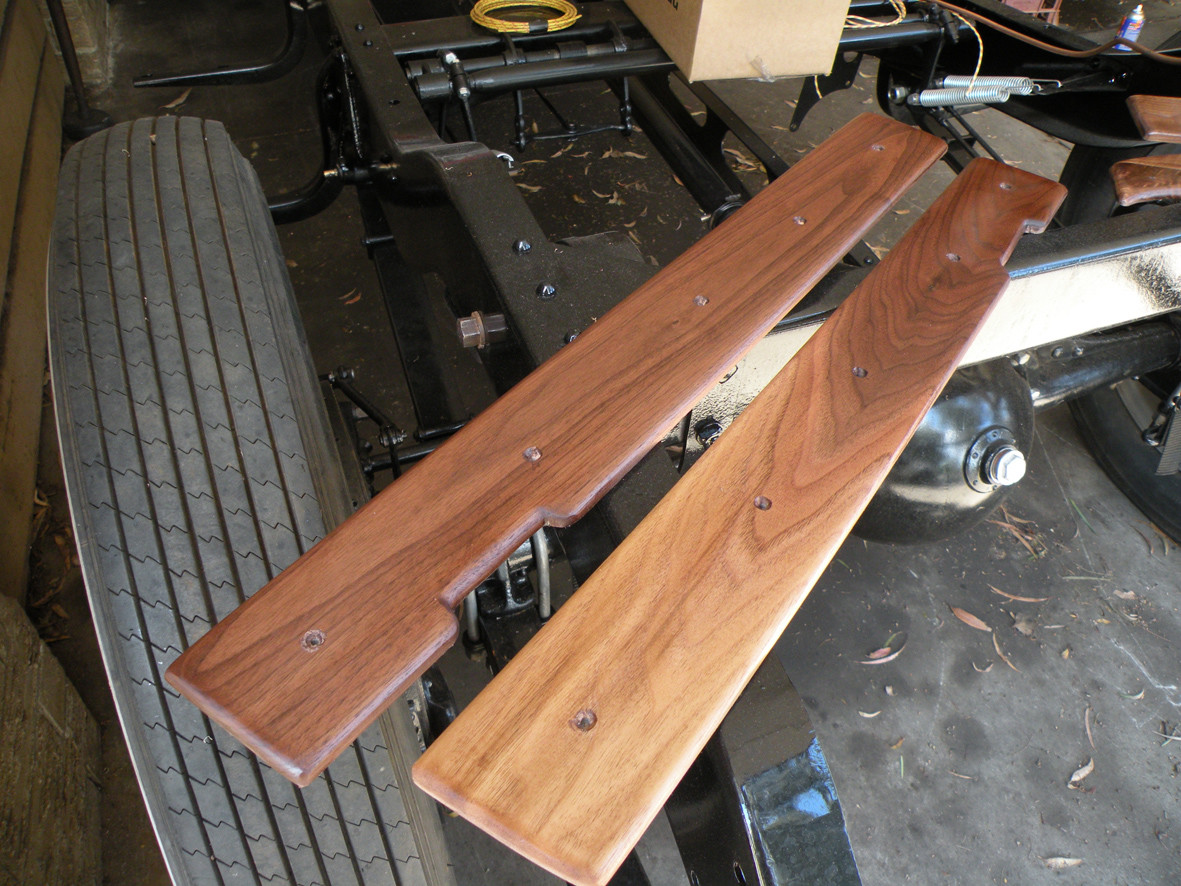
11-9-2011
Hi all
As anyone who has looked at my 'profile' can tell you yesterday (Nov 9) was my birthday. The Boss lady very kindly gave me a book that could be of interest to other Packard owners, some may already have it. "Packard Automobiles 1920-1958" printed in the UK by Brooklands Books as part of their Portfolio series. It is a collection of road tests and articles drawn from magazine and newspaper articles. At 296 A4 size pages it is a wealth of information. ISBN9871855209213
The Index reads like "Whose Who" of Motoring Magazines


bravo!
Posted by CCmyVW on 1/26/20 @ 5:30:36 PM